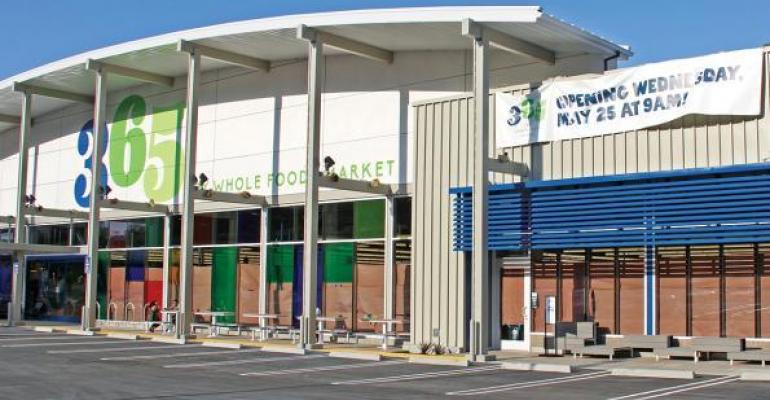Just how much will the small format 365 concept help Whole Foods Market? Participants in SN’s 21st Annual Financial Analysts Roundtable last month offered mixed opinions.
While analysts overall were impressed with the model and its initial results, some warned it would not be enough to offset souring sales at Whole Foods’ legacy stores. Others believed 365 was promising enough to grow faster than company officials have so far indicated by becoming a low-cost conversion option for struggling legacy stores and compete on more equal footing with the price-focused competitors that have stolen so much of Whole Foods' momentum.
Given that Whole Foods operates over 400 legacy stores, a handful of 365 locations may not make much of a difference.
“If they get 20 of them open it’s still a small percentage of the whole company, so it’s not going to change the direction of the company,” said Chuck Cerankosky, analyst, Northcoast Research. He noted Whole Foods has announced plans to open 100 locations but only 17 are slated to be 365 stores.
Others worried about the potential for cannibalization with legacy stores.
“I just felt like if I had that [365] store close to me and I had a Whole Foods three or four miles away that I used to go to, I would never have to go to Whole Foods again. Between the two I thought 365 is a compelling concept. It competes with Trader Joe’s. But I didn’t think you need Whole Foods anymore,” said Joe Feldman, senior managing director, Telsey Advisory Group.
Yet, just because 365 can compete with Trader Joe’s doesn’t mean it will match its rival’s success. Ajay Jain, a Pivotal Research analyst, said that while 365 may bring in better sales per square foot than legacy Whole Foods stores, “I don’t think you’re going to see it ever approach the level of Trader Joe’s.”
Moreover, Scott Mushkin, managing director, senior retail/staples analyst, Wolfe Research, thinks the killer format 365 is hoping to be already exists.
“While everyone hyperventilates over the 365 format coming out of Whole Foods, if you want a Millennial format you’ve got one already in Sprouts,” said Mushkin.
On the flip side, at least one analyst felt 365 will prove effective because it can compete with other retailers in a way legacy Whole Foods stores no longer do.
Bill Kirk, U.S. food retail analyst, RBC Capital Markets, argued that while Kroger and Costco’s increased line-up of organic offerings may steal new customers from Whole Foods, they’re not siphoning off existing customers.
“So if the premise is that Kroger is stealing the incremental customer, the 365 becomes the first weapon Whole Foods has ever had of recruiting new people that are just entering the category,” said Kirk.
Initial results from 365 stores are impressive.
“But what they’ve said so far is baskets are bigger, productivity per square foot is higher, build out costs are 50% to two-thirds lower, and they found 1,000 basis points of cost to take out of the store relative to the legacy stores,” said Kirk.
He asserted legacy stores "would be the annuity that pays for 365 expansion," and predicted that in 2017, 365 stores will account for “the bulk” of Whole Foods’ unit growth.





